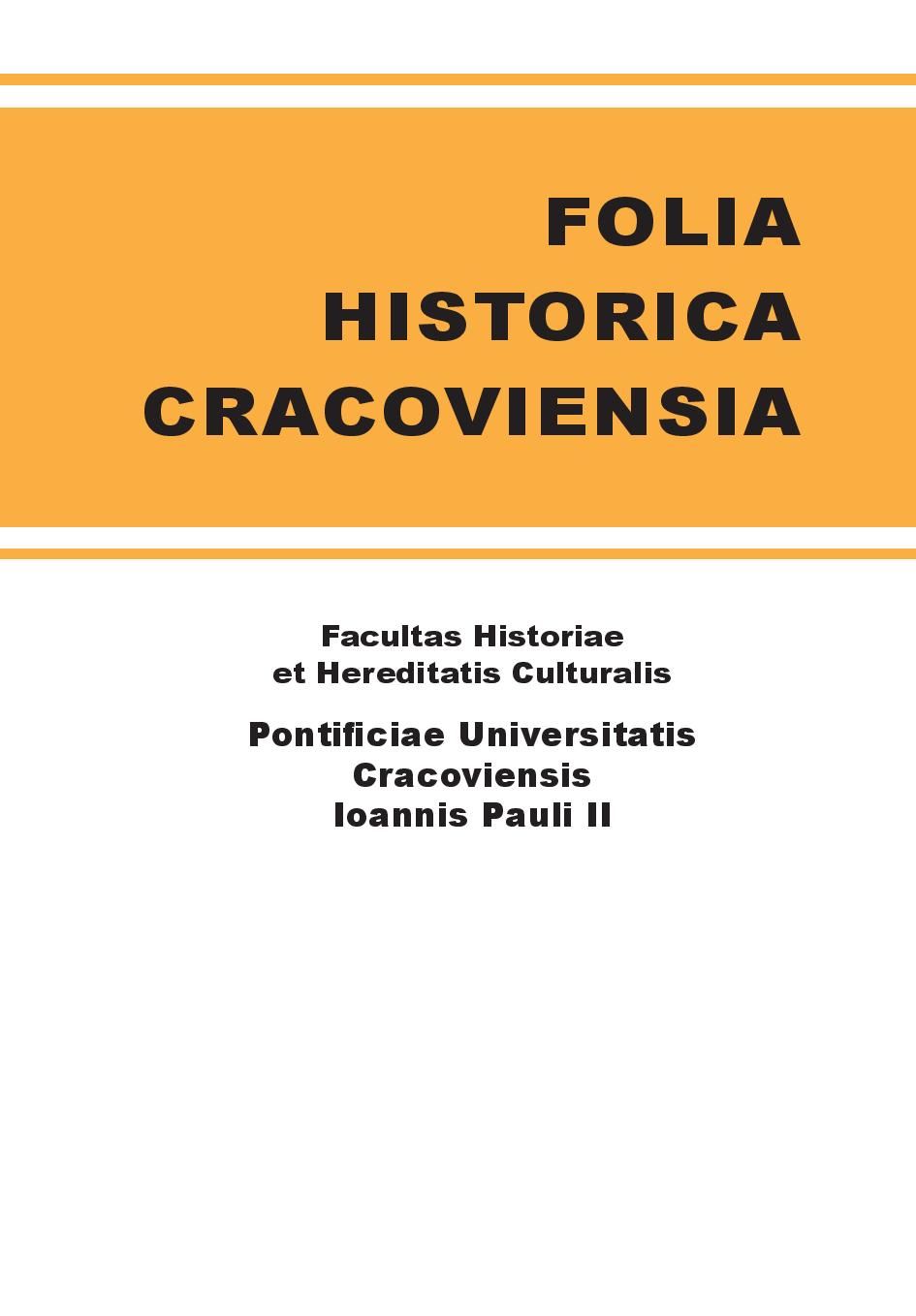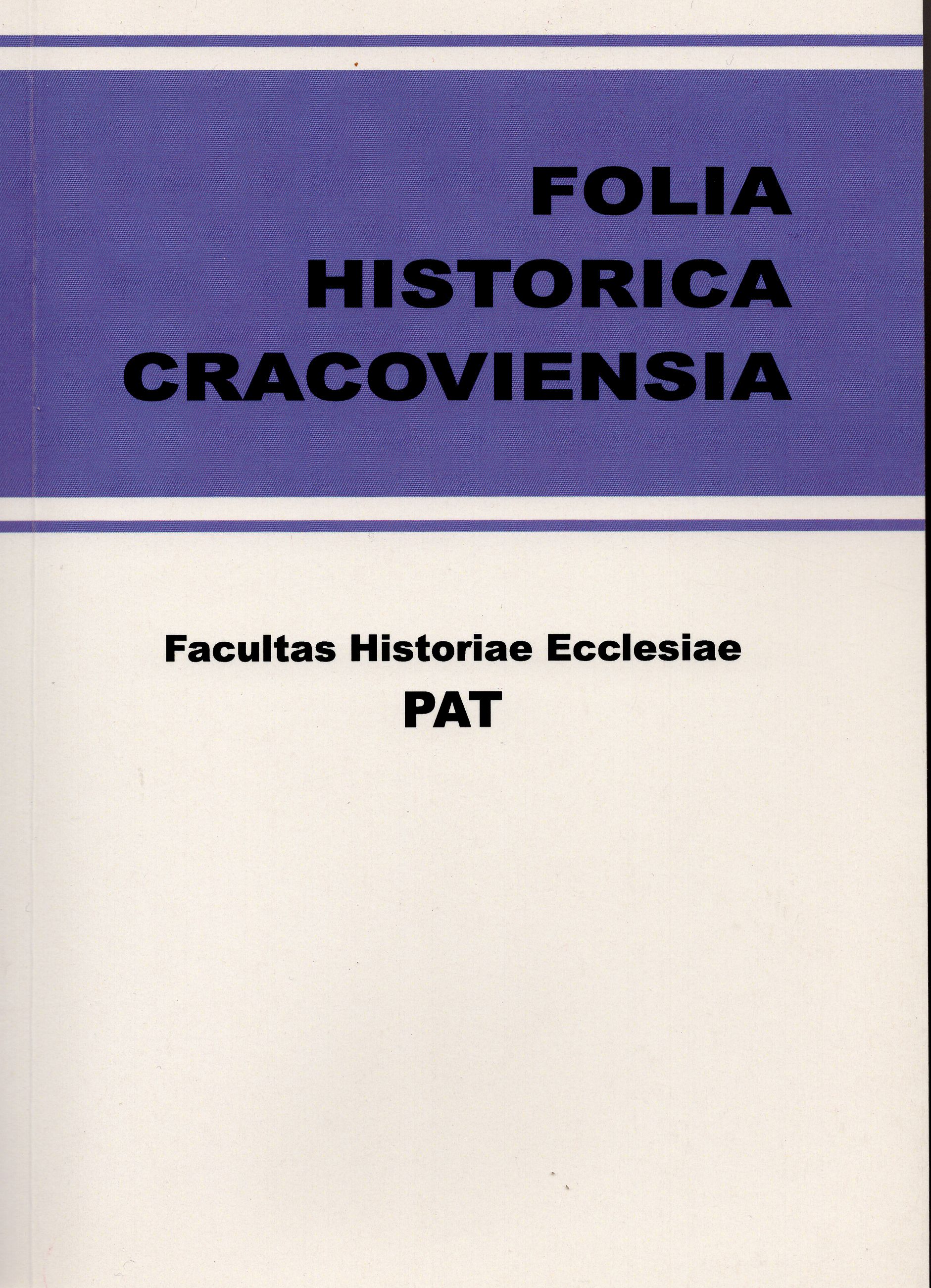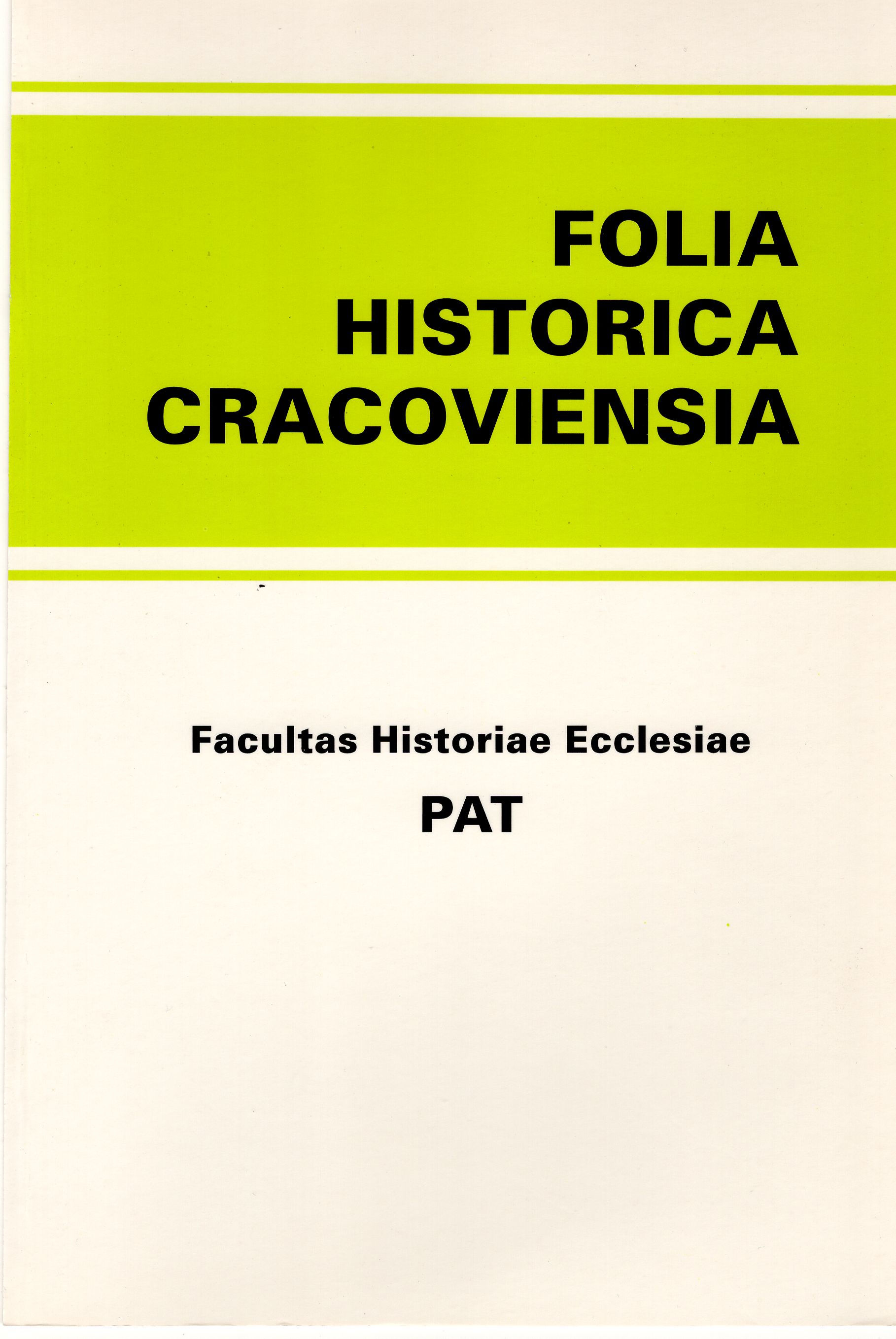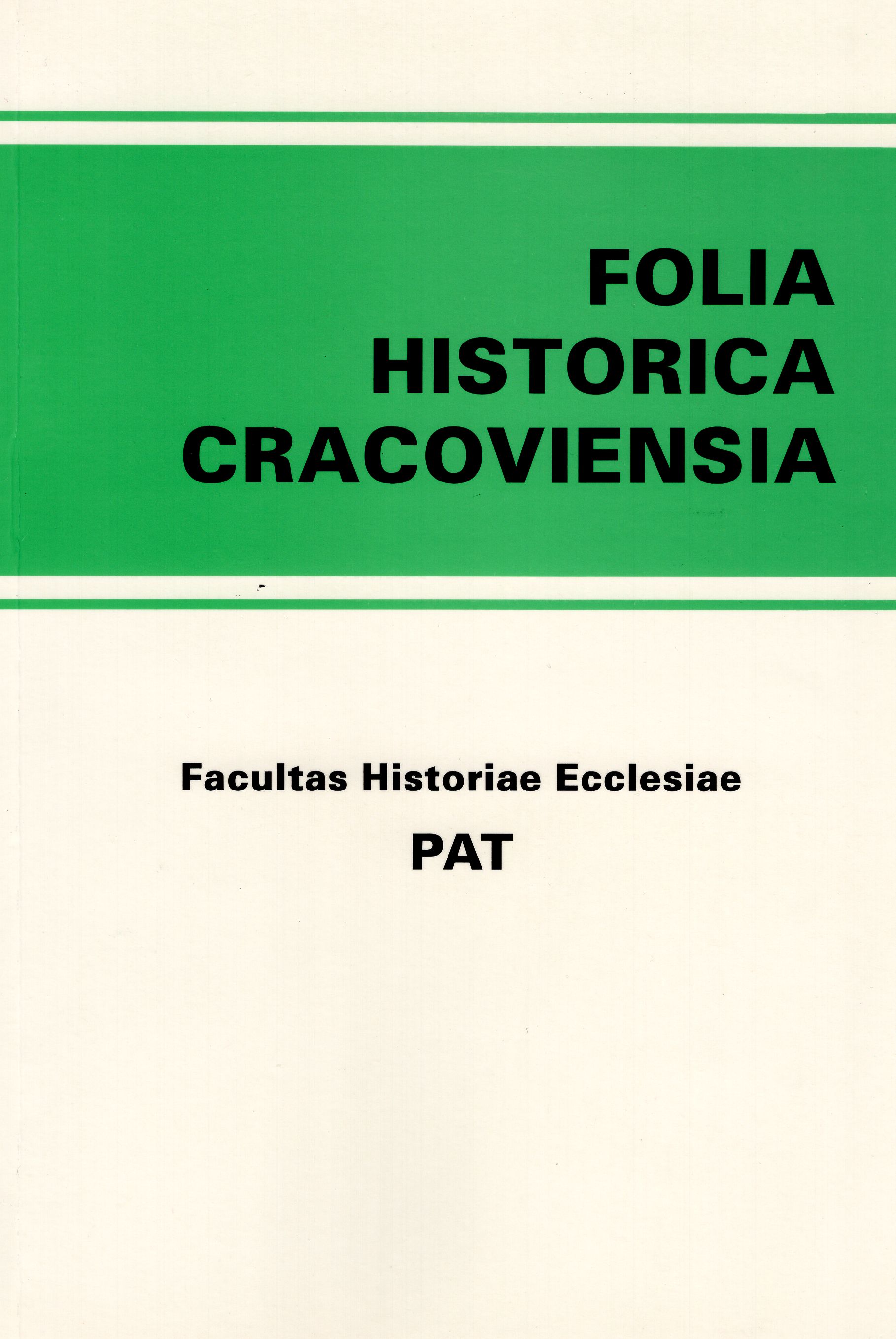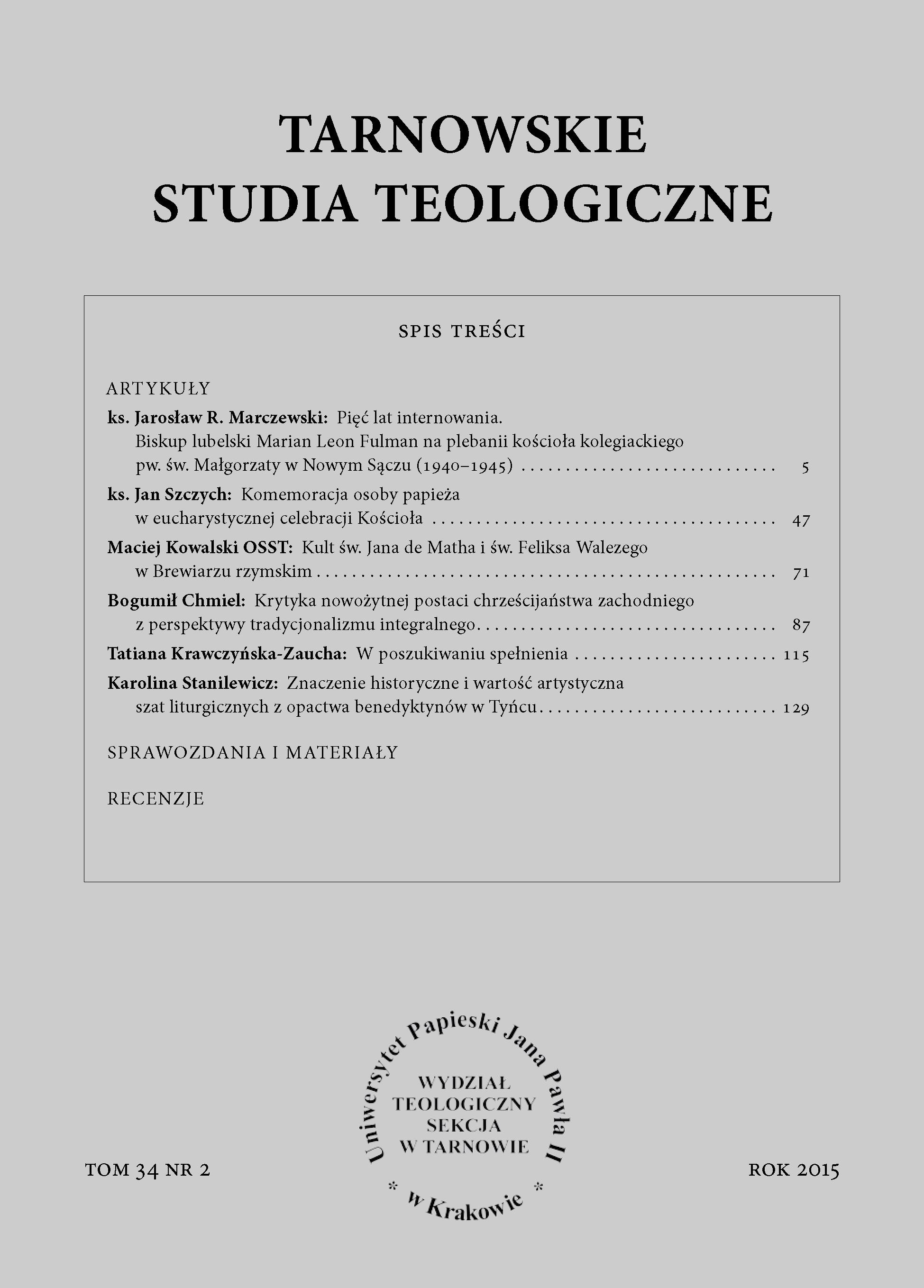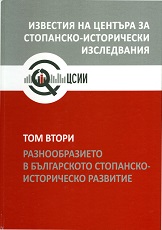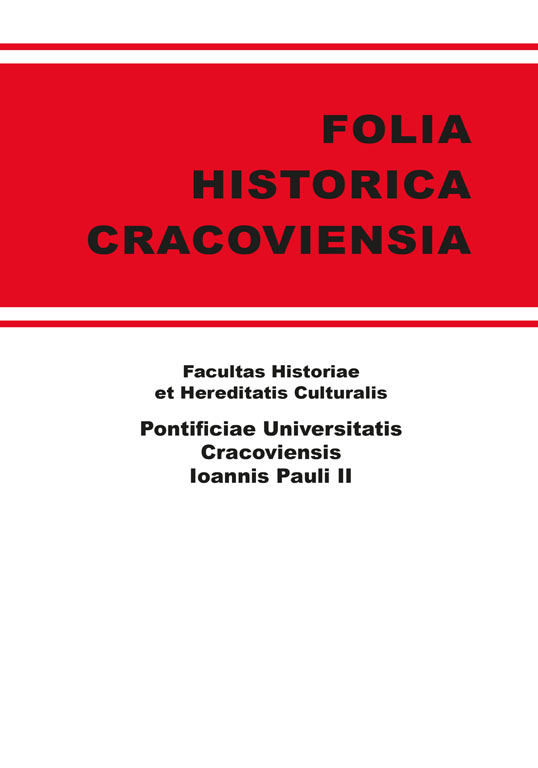
Wspomnienia bp. Adama Stanisława Krasińskiego: między rękopisem a publikacją
Biskup diecezji wileńskiej Adam Stanisław Krasiński (1810–1891) dał się poznać nie tylko jako aktywny hierarcha Kościoła katolickiego, ale też jako zaangażowany uczestnik ówczesnego życia kulturalnego i literackiego. Za niedostosowanie się do instrukcji generalnego gubernatora Michaiła Murawjowa nakazującej wydanie okólnika potępiającego powstanie styczniowe Krasiński na początku lata 1863 roku został zesłany do Wiatki (obecnie Kirow). Zwolniony z wygnania został w 1883 roku, ale bez prawa powrotu do swojej diecezji, dlatego osiadł w Krakowie.Krakowski okres życia biskupa z twórczego punktu widzenia było bardzo aktywny. Od młodości interesując się literaturą, przygotował słownik synonimów polskich. W Krakowie zaczął również pisać wspomnienia. Po raz pierwszy pamiętniki biskupa wileńskiego – Wspomnienia – napisane w ojczystym języku polskim ukazały się w 1900 roku w krakowskiej gazecie „Czas”. W tym samym roku 1900 (lub też na początku 1901), wydawnictwo „Czas” opublikowało je jako książkę w nakładzie 150 egzemplarzy. We wspomnieniach są bardzo ciekawe szczegóły z historii zakonu pijarów, o położeniu Kościoła katolickiego na ziemiach dawnej Rzeczypospolitej Obojga Narodów, które zostały zagarnięte przez imperium rosyjskie. Znajdujemy tam także wiadomości o literackich i intelektualnych realiach życia w Wilnie. Dwadzieścia lat wygnania opisał bardzo zwięźle, a życia w Krakowie po powrocie z wygnania nie wspomniał w ogóle.Artykuł pragnie zrekonstruować drogę Wspomnień biskupa wileńskiego od rękopisu do druku na początku wieku XX. Podczas odkrywania okoliczności tworzenia i publikowania Wspomnień ustalono, że w zbiorach Muzeum Narodowego w Krakowie od 1917 roku znajduje się nie rękopis Wspomnień Krasińskiego, lecz wersja redakcyjna złożona z fragmentów autografu. Należy przyjąć, że oryginalne Wspomnienia nie zachowały się. Stanisław Estreicher (1869–1939), profesor na Uniwersytecie Jagiellońskim w Krakowie i współpracownik dziennika „Czas”, zredagował rękopis. Niewątpliwe jest, że część pamiętników Krasińskiego była wśród rękopisów przewiezionych w 1927 roku z Muzeum Polskiego w Rapperswilu do Biblioteki Narodowej w Warszawie. Adnotacja dawnego rękopisu Krasińskich w Rapperswilu pozwala stwierdzić, że jeden z nich był częścią wspomnień biskupa o jego latach spędzonych na wygnaniu. Przygotowujący Wspomnienia Krasińskiego do publikacji w 1900 roku Stanisław Estreicher nic o rękopisie Krasińskiego w Rapperswilu nie wiedział. Kiedy i jak rękopis Krasińskiego dostał się do muzeum w Rapperswilu nie jest oczywiste. Rękopis Wspomnień Krasińskiego został przekazany do Warszawy w 1927 roku do zbiorów Biblioteki Narodowej, gdzie zniszczony został w czasie Powstania Warszawskiego. Nie ma danych, które wskazywałyby, że w przyszłości można by było ów ostatni rękopis (lub jego kopię) gdzieś odnaleźć. Geneza Wspomnień biskupa wileńskiego Adama Stanisława Krasińskiego, historia konserwacji rękopisu oraz jego przygotowania do publikacji kryją więcej niż jedną tylko zagadkę. / Bishop of Vilnius Diocese Adam Stanisław Krasiński (1810–1891) left a deep imprint not only as an active hierarch of the Roman Catholic Church, but also as an energetic participant of 19th c. cultural life, a man of letters. Not complying with the instruction of Governor General Michael Murav’ev to issue a circular condemning the 1863 uprising, Krasiński in the early summer of 1863 was exiled to Vyatka (now Kirov). Released from exile in 1883, without the right to return to his diocese, Krasiński settled in Krakow.The period of the life of the bishop in Krakow from a creative point of view was very productive. From his youth interested in literature, having also been a man of letters, the preparer of a dictionary of Polish synonyms, Krasiński while living in Krakow began to write memoirs. For the first time the Memoirs [Wspomnienia] of the Bishop of Vilnius written in his native Polish were published in 1900 in the newspaper „Czas”, and in the same year 1900 (or in early 1901) the „Czas” publishing house issued them as a book with a press run of 150 copies. In the Memoirs there are interesting details from the history of the Piarist order, about the situation of the Roman Catholic Church in the lands of the former Polish-Lithuanian Commonwealth that after its collapse fell to the Russian Empire, and the literary and intellectual realities of life in Vilnius. The twenty years of exile are described very succinctly and the life in Krakow after returning from exile is not even mentioned at all.The paper reconstructs the path of the Vilnius Bishop’s memoirs from manuscript to printing at the beginning of the 20th c. While uncovering the circumstances of the writing and publishing of the Memoirs, it was determined that in the collections of the National Museum in Krakow since 1917 is stored not the manuscript of Krasiński ‘s memoirs, but its editorial version with fragments of the autograph. It is assumed that the original memoirs have not survived. Stanisław Estreicher (1869–1939), then a professor at the Jagiellonian University in Krakow and a contributor to the newspaper „Czas”, edited the manuscript. It is clear that part of Krasiński’s Memoirs were among the manuscripts transferred from the Polish Museum in Rapperswil to the National Library in Warsaw in 1927. The annotation of the former Krasiński manuscript in Rapperswil lets one declare that among them was the part of the bishop’s memoirs about his years spent in exile. The preparer of the Krasiński Memoirs for publication in 1900 Stanisław Estreicher did not know anything about the Krasiński ‘s memoirs manuscript in Rapperswil. When and how the Krasiński manuscripts arrived in the Rapperswil museum is unclear. The manuscript of Krasiński’s memoirs handed over to Warsaw in the 1920s ended up in the collections of the National Library destroyed during the war. There are no data that would suggest that the latter manuscript (or its copy) could be found in the future. The genesis of the memoirs of Vilnius Bishop Krasiński, the history of the manuscript’s preservation and its preparation for publication hide more than one riddle
More...
